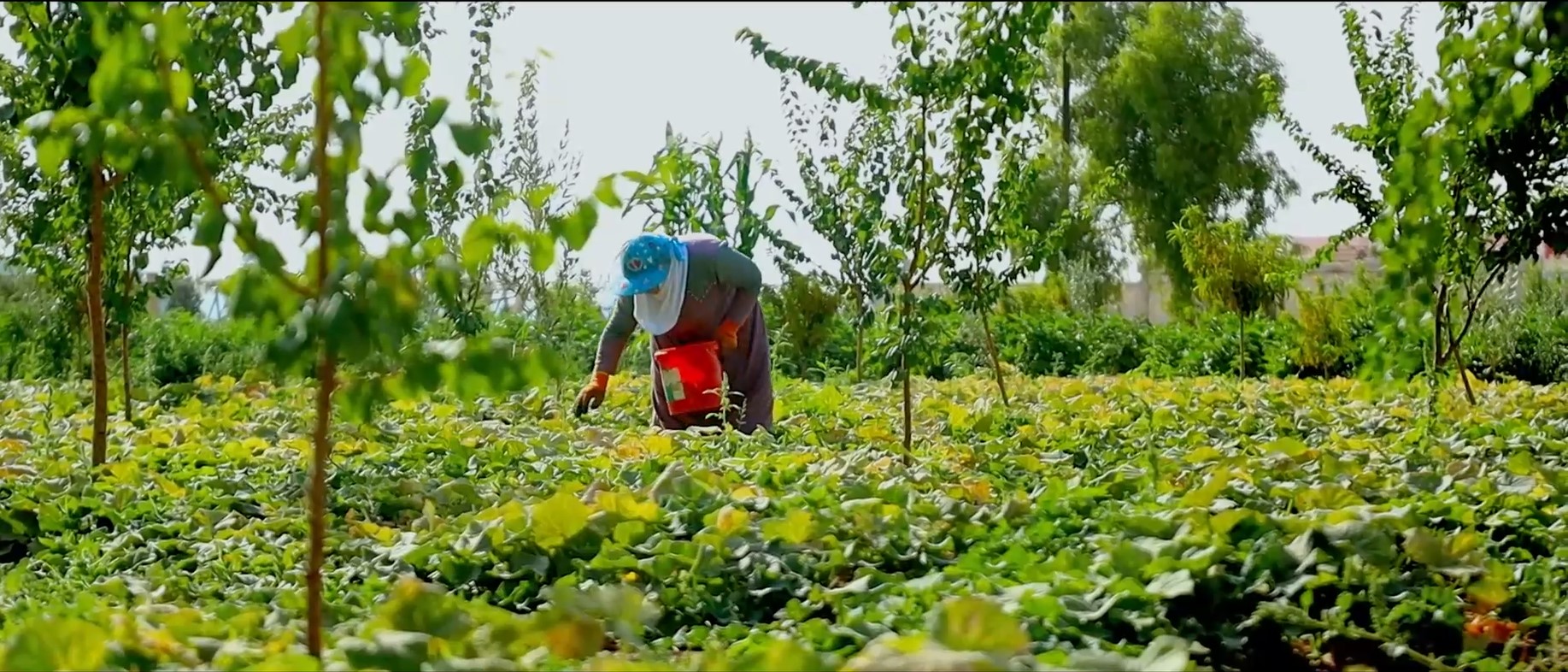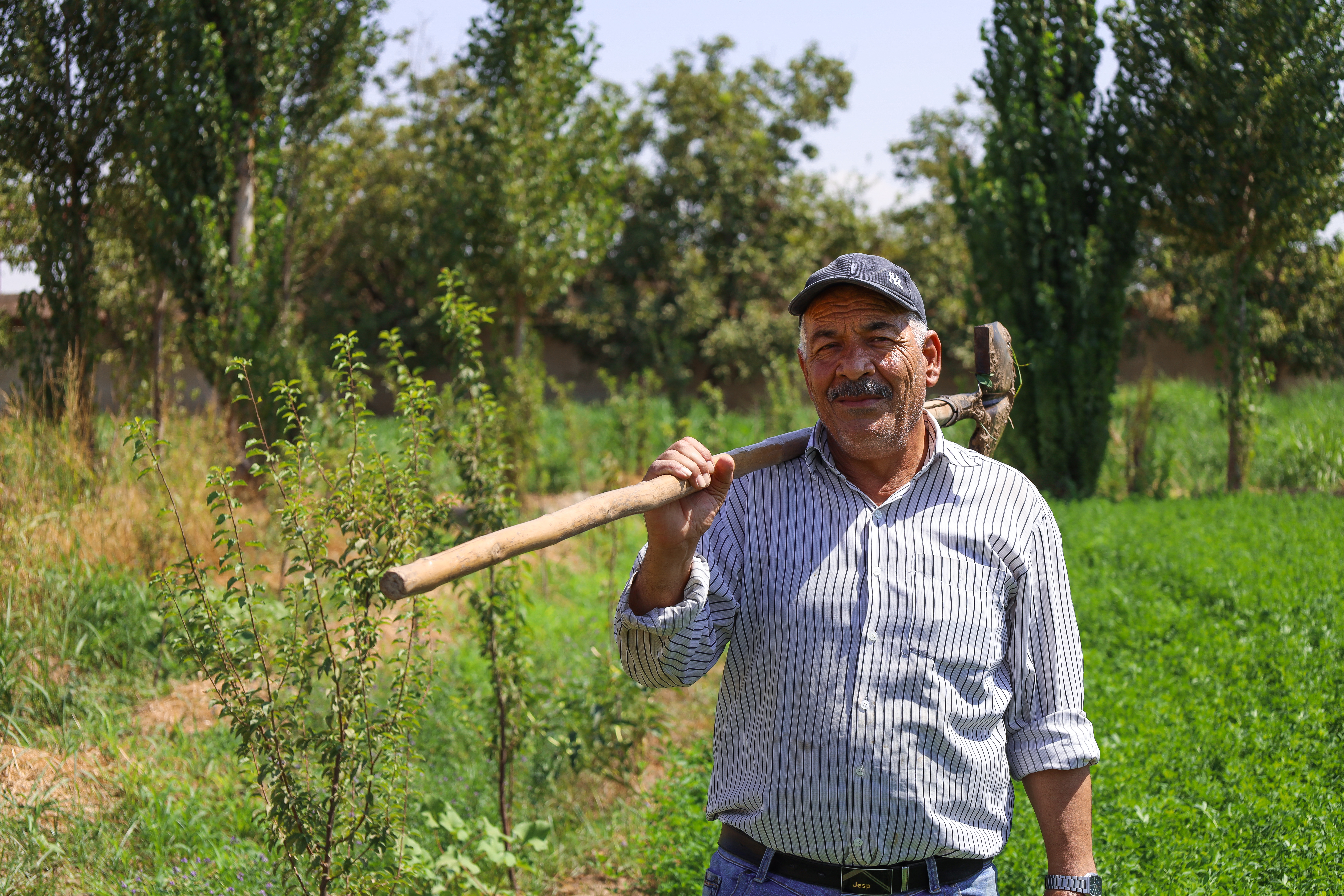Environmental Challenges and the Road to Resilience: Transforming Eastern Ghouta's Landscape
September 20, 2023

Farmer in Zebdine, Rural Damascus
Syria grappled with a host of environmental challenges even before the crisis, from water scarcity and soil degradation to air pollution and insufficient waste management. The substantial water deficit painted a stark picture of resource strain.
Eastern Ghouta, a countryside area in southwestern Syria that surrounds the city of Damascus, was once considered the lung of Damascus. Historically famous for its orchards and greenery, it constitutes the main agricultural source feeding the residents of Damascus and Rural Damascus.
Succumbing to random urban expansion in recent decades, and over a decade of conflict have left the area, which homes around 600,000 people, with many challenges. This has painted a tapestry of complexities, starting with decimated water and sewage systems, which pose grave health risks to the population and generate a breeding ground for diseases and contamination.
“It was a nightmare to wake up every morning to sewage water covering the ground of my house,” said Hanan, a 47-year-old widow of five. “I used buckets to move the dirty water outside, 15 to 20 times daily. It broke my back,” she added.
Malfunctioning sewage networks meant that wastewater would pour directly into the streets and sometimes leak into houses. Accumulation of stagnant waste attracts disease, and the unpleasant odours and unsanitary conditions can negatively impact social well-being and contribute to respiratory issues.
As the natural water supply decreases, people mainly depend on wells for drinking and agriculture. Untreated sewage contaminating water sources exposes millions - not just the residents of the area - to waterborne diseases such as cholera, from which Syria has suffered from an outbreak in 2022 that resulted in 100 attributed deaths.
In 2023, the United Nations Development Programme (UNDP), with generous funding from The Adaptation Fund, rehabilitated thirteen kilometres of sewage networks in the towns of Al Mleiha, Zebdine, Deir Al Asafir, and Marj Al Sultan in Eastern Ghouta, benefiting 68,000 people living in the area.
During the rehabilitation of the sewage network in the area, a heartening demonstration of community solidarity unfolded. Residents collectively mobilized additional resources to facilitate the connection of their homes to the central sewage network. This poignant illustration showcased communities uniting and extending mutual support during challenging times, driven by a shared commitment to the well-being of the community.
The project, set to unfold over three and a half years, is designed to enhance the resilience of Eastern Ghouta's communities in Rural Damascus against the pressing challenges of water scarcity exacerbated by climate change. The project aspires to fortify the region's capacity to withstand the adverse effects of evolving climatic conditions through a holistic approach that combines integrated natural resource management with immediate and targeted adaptation interventions.
At present, UNDP is actively engaged in the comprehensive process of rehabilitating an extensive 48-kilometer stretch of irrigation networks within the region. Simultaneously, preparations are underway to establish a cutting-edge water treatment station. This strategic initiative aims to seamlessly integrate the treatment station with the existing sewage network, facilitating the purification process of water resources. Subsequently, the treated water will be channelled into the revitalised irrigation networks, where it will foster safe and sustainable agricultural practices by providing a reliable source of water for the nourishment of the surrounding agricultural land.

Mohamad Al Kurdi cultivating his land in Eastern Ghouta
“We used to cultivate about 50 tons of apricots every year, but many of the trees have withered from lack of water. This year, the production did not exceed 500 kilos,” said Muhamad, a 56-year-old farmer and a father of six. “I hope with the desalination plant, we will be able to plant more land and increase our production,” he added.
Commenced in July 2021, the project's implementation is a collaborative endeavour involving the United Nations Human Settlements Programme (UN-Habitat), the Food and Agriculture Organization (FAO), and the United Nations Development Programme (UNDP). The project comprises three distinct components, each contributing to the holistic enhancement of community resilience.
UN-Habitat spearheads the Integrated Natural Resource Management component tailored to navigate the intricacies of climate change and the water challenges precipitated by crises. On the other hand, UNDP focuses on establishing water supply systems that are both efficient and sustainable, fortified against the impacts of climate change, and designed to cater to urban and agricultural needs. Meanwhile, FAO’s intervention is dedicated to establishing robust and sustainable irrigation systems, fostering resilient agricultural practices, and ensuring both the stability of income and the security of livelihoods.
With sustainable resource management as the compass, Syria charts a course toward climate change resilience to support sustainable development, enhance social cohesion and improve people’s livelihoods and well-being. In the complex balance between human aspiration and environmental harmony, Eastern Ghouta's story signifies not just the transformation of landscapes but the persistent spirit of communities striving to secure a future that thrives on cooperation, sustains through resilience, and flourishes in unity.
By Asma’ Nashawati, Communications Associate, UNDP Syria

 Locations
Locations



